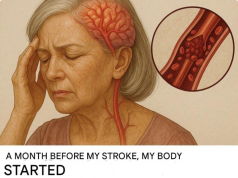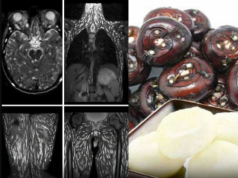Pain in the legs and bones is a common complaint that can stem from various causes, ranging from overuse and injury to underlying health conditions. However, one often overlooked cause of such discomfort is a deficiency in essential vitamins and minerals. Among these, vitamin D stands out as a critical nutrient whose absence can lead to significant musculoskeletal pain. This article explores the role of vitamin D in bone and muscle health, why its deficiency causes pain, and how to address it effectively.
Understanding Vitamin D: The Sunshine Vitamin
Vitamin D is a fat-soluble vitamin that plays a crucial role in maintaining bone health, supporting immune function, and regulating calcium and phosphorus levels in the body. It is often referred to as the “sunshine vitamin” because the skin produces it when exposed to sunlight. Dietary sources of vitamin D include fatty fish (like salmon and mackerel), fortified foods (such as milk and cereals), and supplements.
Despite its importance, vitamin D deficiency is surprisingly common, affecting millions of people worldwide. Factors contributing to this deficiency include limited sun exposure, darker skin pigmentation (which reduces vitamin D synthesis), dietary restrictions, and certain medical conditions like Crohn’s disease or celiac disease that impair nutrient absorption.
How Vitamin D Deficiency Causes Leg and Bone Pain
1. Weakened Bone Structure
Vitamin D is essential for the absorption of calcium and phosphorus, two minerals critical for maintaining strong bones. When vitamin D levels are low, the body struggles to absorb sufficient calcium, leading to weakened bones. Over time, this can result in conditions like osteomalacia (softening of the bones in adults) or osteoporosis , both of which can cause chronic bone pain, especially in weight-bearing areas like the legs.
2. Muscle Weakness and Pain
Vitamin D receptors are present in muscle tissue, indicating its role in muscle function. A deficiency can lead to muscle weakness, cramps, and pain, particularly in the legs. This is because muscles rely on calcium for proper contraction and relaxation, and without adequate vitamin D, calcium regulation becomes impaired.
3. Chronic Inflammation
Low levels of vitamin D have been linked to increased inflammation in the body. Chronic inflammation can exacerbate pain in the joints, bones, and muscles, making it difficult to pinpoint the exact cause of discomfort.
4. Impact on Nerve Function
Vitamin D also plays a role in nerve health. Deficiencies may contribute to neuropathic pain, which can manifest as tingling, burning sensations, or sharp pains in the legs and other parts of the body.
Signs and Symptoms of Vitamin D Deficiency
While leg and bone pain are hallmark symptoms, other signs of vitamin D deficiency include:
- Fatigue and tiredness
- Muscle weakness or aches
- Frequent fractures or slow healing of injuries
- Mood changes, including depression or anxiety
- Increased susceptibility to infections
If you experience persistent leg or bone pain alongside any of these symptoms, it’s worth considering a vitamin D deficiency as a potential cause.
Diagnosing Vitamin D Deficiency
A simple blood test called the 25-hydroxyvitamin D test can measure the level of vitamin D in your bloodstream. Normal levels typically range between 30–100 ng/mL. Levels below 20 ng/mL are considered deficient, while those between 21–29 ng/mL indicate insufficiency.
If your test results reveal low vitamin D levels, your healthcare provider may recommend dietary changes, increased sun exposure, or supplementation to restore optimal levels.
Treating and Preventing Vitamin D Deficiency
1. Sunlight Exposure
The most natural way to boost vitamin D levels is through safe sun exposure. Spending 10–30 minutes in the sun several times a week—depending on your skin tone and geographic location—can help your body produce sufficient vitamin D. Be mindful of sunscreen use, as it can block UVB rays necessary for vitamin D synthesis.
2. Dietary Sources
Incorporate vitamin D-rich foods into your diet, such as:
- Fatty fish (salmon, tuna, mackerel)
- Fortified dairy products, orange juice, and cereals
- Egg yolks
- Mushrooms exposed to sunlight
3. Supplements
For individuals with severe deficiencies or limited access to sunlight and dietary sources, vitamin D supplements are an effective solution. Dosage recommendations vary based on age, health status, and severity of deficiency, so consult your doctor before starting supplementation.
4. Lifestyle Adjustments
Maintaining a balanced diet, staying physically active, and managing stress can support overall bone and muscle health. Weight-bearing exercises like walking, jogging, or strength training also promote bone density and reduce the risk of fractures.
When to Seek Medical Attention
If leg and bone pain persists despite addressing potential vitamin D deficiencies, it’s important to consult a healthcare professional. Other conditions, such as arthritis, fibromyalgia, or nerve damage, may also cause similar symptoms and require specialized treatment.
Conclusion: Prioritize Your Vitamin D Levels
Leg and bone pain caused by vitamin D deficiency is both preventable and treatable. By understanding the vital role this nutrient plays in musculoskeletal health and taking proactive steps to maintain adequate levels, you can protect yourself from unnecessary discomfort and long-term complications. Whether through sunlight, diet, or supplements, ensuring your body has enough vitamin D is a small investment with significant returns for your overall well-being.
Don’t let painful legs and bones hold you back—shine a light on your vitamin D needs today!










